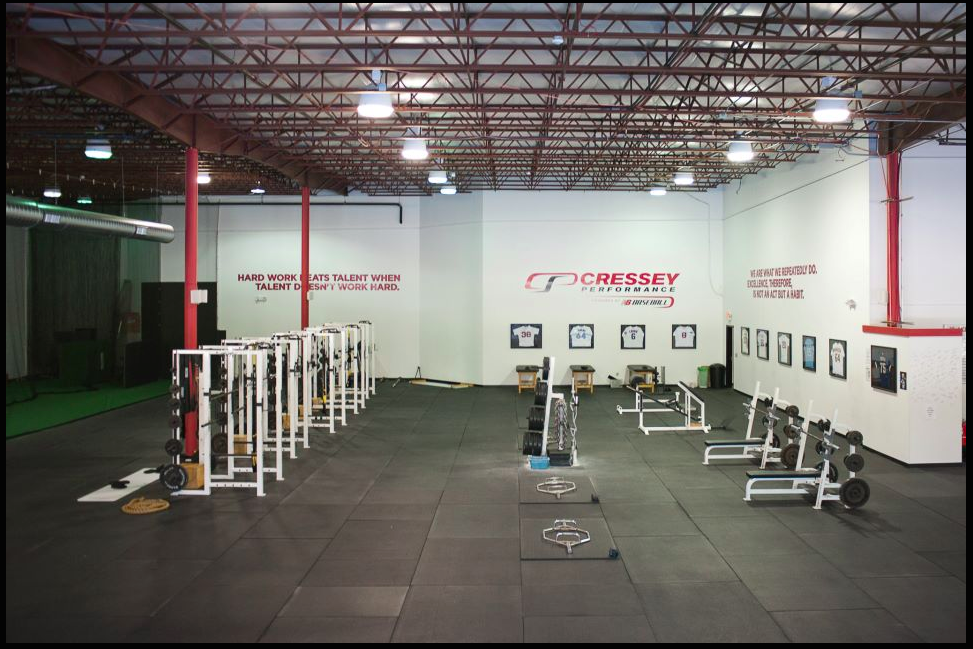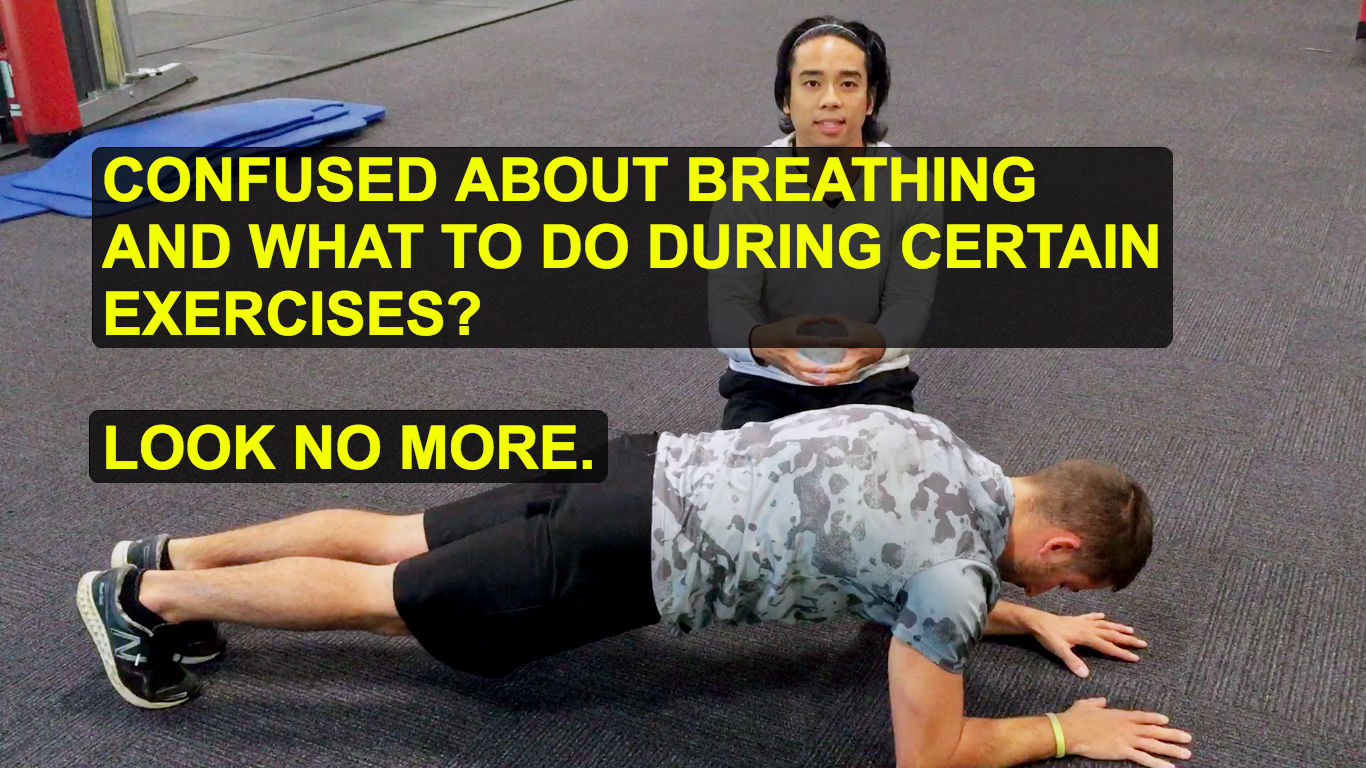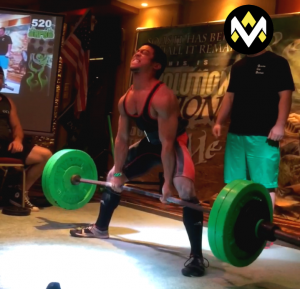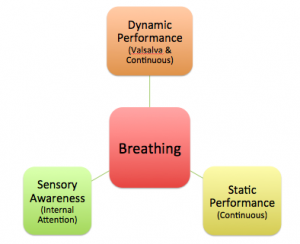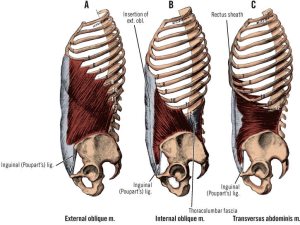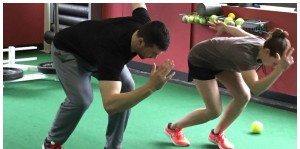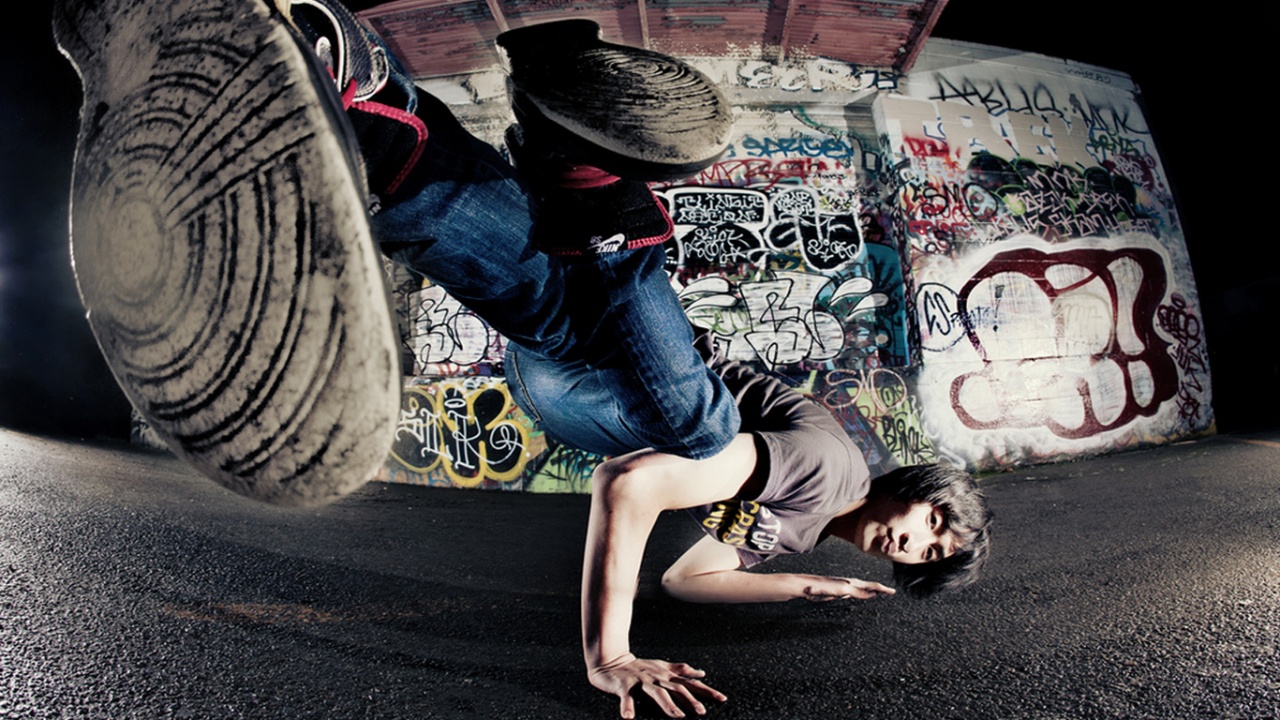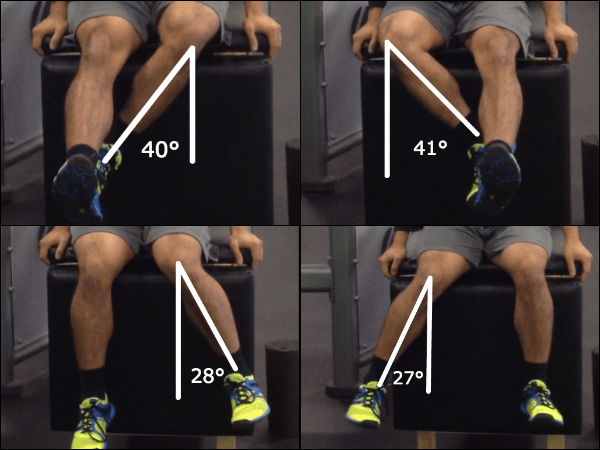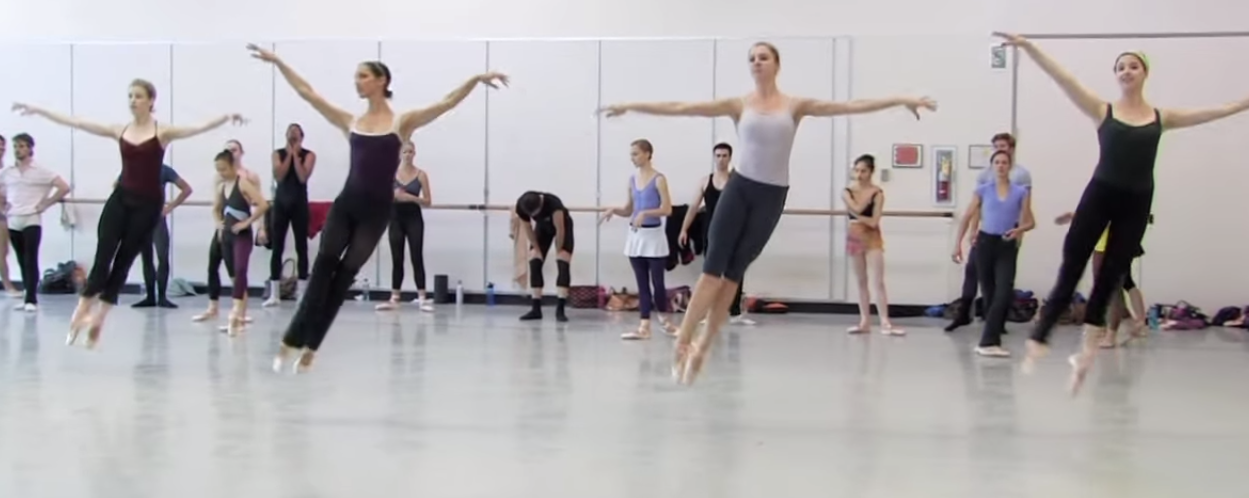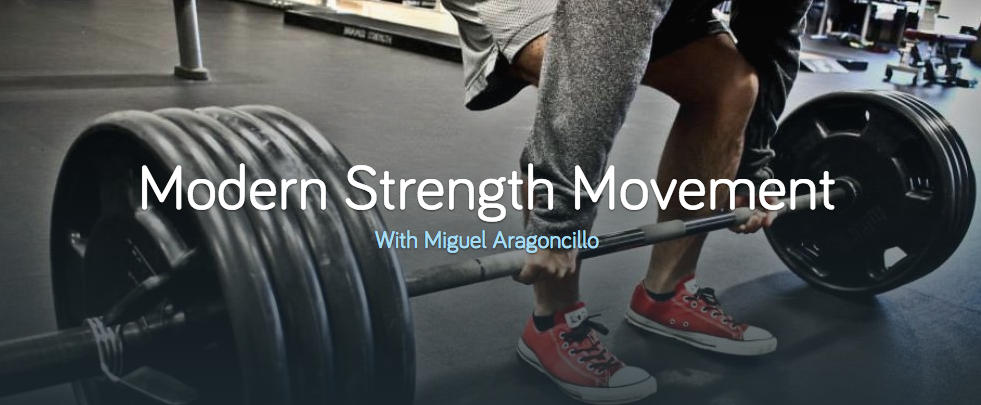This is a guest post that originally published on Tony Bonvechio’s site BonvecStrength.com. For the original article, go here.
—-
I have the fortune of sharing barbells, weights, chalk, and sometimes strange smells with the likes of Tony Gentilcore, Greg Robins, Tony Bonvechio, and Eric Cressey, (and now Nancy Newell) along with the various interns that lift heavy stuff. Having these individuals as training partners really sparks a fire under your ass, as the large philosophy here involves getting better everyday.
When you step into Cressey Sports Performance, people have various expectations:
- An intelligent approach to the human body, found in our approach to movement assessments.
- An environment similar to a collegiate weight room.
- Respect for the requirements for your requisite task (or sport/life/goals).
The environment at CSP pervades beyond just business hours – it can be traced from the intensity, efficiency, and accountability that all of the staff at Cressey Sports Performance creates on an almost daily basis.
The environment is one that I haven’t found in many other places: it begins with ritualistic-like warm-ups, efficiency akin to a production line, followed up with some heavy lifting, ranging anywhere for a top set for max repetitions, or the occasional one rep max. After all of this, any accessory work is completed.
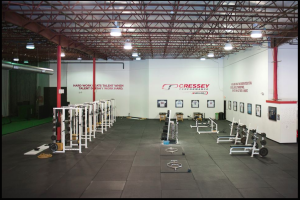
All of this is done well within 60 to 90 minutes. This is largely because that we all have to work shortly thereafter, or even perhaps go home to a life outside of the gym (if lifting after business hours).
I wanted to outline the background of who I share a weight room with and our approach to lifting for three reasons:
- Our perceived intensity when we are lifting.
- Our shared accountability for each other.
- Efficiency for getting things done.
There is a thought process called “kaizen”, taken from Japanese and Chinese philosophies, referring to continuous improvement. When you have training partners, instead of practicing a martial arts, you are constantly training with barbells, dumbbells, bands, and chains.
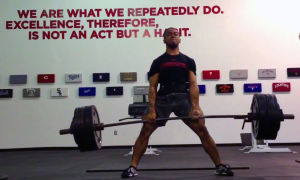
You see, co-worker and friend Greg Robins has a phrase he has used that both Tony and I both subscribe to and it is, “Lead from the front.”
If I am going to ask you to clean something up, know that I have held that same broom and mop, and I have done that task before countless times.
Drawing a parallel to the weight room, if I am going to ask you, as a youth, collegiate, or higher athlete, to pick up the pace and effort, just know that I too have gone through those same valleys and peaks of efforts, sweat, and work.
Continuously improving is an idea that should be familiar to those with hopes of achieving a seat on the roster of a professional sports team, let alone bringing the intensity and accountability to a singular day of lifting.
If you decide to throw yourself amongst the lifting “chambers” of those at CSP, will you be detracting from, or adding to this environment?
Perceived Intensity
There is a phrase that I keep on my desk at work, and it comes from Ryan Holiday’s The Obstacle is The Way.
“How you do one thing, is how you do everything.” ~Ryan Holiday
If you mosey along about your lifts, eventually working up to whatever percentages or rep maxes you are aimed at utilizing, perhaps there can be parallels drawn from how you approach your training program, how you live your life, or maybe even how you talk with family and friends.
Now, I’m of the belief that none of us as co-workers have to ask each other to pick up the intensity about our lifting session prior to being hired. We’ve all individually brought our own energies into the mix, and if anything we have added to the fire, instead of detracting from said environment.
Takeaways on Intensity
Whether you’re an athlete or a strength coach hoping to lead from the front, understand that all of our training here at Cressey Sports Performance is done with a purpose.
Many people come from near and far to train at CSP – some for a few days, some for years. What they take away most is almost always the environment (along with the exercise program and approach obviously). So hopefully you begin to understand that it often isn’t an individual’s intensity that sparks this fire. Rather, it is the shared intensity and bond that we all have for the affinity for training, sports, and achievement of goals that cannot be replicated anywhere else.
Questions to ask yourself, whether you are training alone or with others:
- Am I bringing the intensity to my lifting endeavors?
- Am I bringing others down?
- Am I adding positive energy to the group?
If the answers to these questions don’t sit well with you, perhaps it is time to change and improve the intensity with which you approach your lifting endeavors.
If the answers to these questions appease you, see what you can do about improving those around you. The maxim of “A rising tide lifts all boats,” holds true in this case, so if your colleagues are slacking, see what you can change (from a non-aggressive manner).
Shared Accountability
I’ve had the fortune of coaching teams of men and women in various sports, and it is always encouraging to see one or two leaders poke their heads through when obstacles present themselves in the form of training factors. No one likes it when an aerobic output day calls for Prowler Pushes for 2 sets of 10 minutes of steady state pushing, or when walking lunges are accounted for for about 10 minutes with a specific tempo.
However, if a co-worker, colleague, or a teammate, is approaching a specific number that they have never hit before, there are a few items that come to mind that I would do:
- Provide one to two coaching cues that will keep them honest.
- I WON’T provide too many things to think about, because that may take them out of the flow state of mind that they need.
Perhaps the easiest idea of accountability to digest comes in the form of providing feedback during the big lifts. Even the strength coaches at Cressey Sports Performance need feedback from time to time – if the numbers call for 90% or higher, or a challenging set calls for high reps, we will all help each other understand what we did during that one set, so we can get better the next time through.
Essentially, accountability is making sure the aforementioned intensity of the day remains throughout the session.
Takeaways on Accountability
How can you improve your accountability for yourself and others?
- On an individual level, if you don’t have anyone to hold yourself accountable, do you choose exercises that keep integrity of the movement (like squatting to a low box during box squats)?
- Do you film yourself and critique yourself honestly?
If a lift does not go as planned…
…how will you approach the accessory work?
…Will you pout because you didn’t hit the planned numbers for the day?
…Or will you move on to the next one and plan to hit that another day?
Your reactions that occur reflect your reflexive thought processes that occur on a moment to moment basis.
Efficiency
When I’m lifting a specific movement pattern such as a squat or deadlift, chances are my colleagues are likewise doing the same movements as well. If we are all doing the same movements (even if they are at different percentages), chances are that everyone will contribute to the mechanical aspects involved with lifting – changing out plates, loading up bars, and generally moving things around.
This provides for a very efficient and well-oiled machine with respects to lifting. This also just proves to generally being useful around the gym.
Takeaways
- If you’re efficient when you’re lifting by yourself, chances are you’ll be efficient when you’re with others as well.
- If you aren’t, perhaps you need to move with a sense of urgency that does not present itself unless you hire someone such as a personal trainer or coach.
- Chances are that you can get done a lift in a much faster time if you don’t talk to anyone, have only as much rest as humanly necessary, and seek to move weights (heavy or not) fast.
- Oh, and stop checking your phone during lifts.
Maintaining an Environment
This post may seem like I have an agenda with respects to the lack of intensity.
If you’re offended by this, I apologize. It was not meant to offend, but rather bring to light the lack of intensity that I see more and more on a daily basis from the youth athletes that I coach.
There are always exceptions to the rule, and with many who come into CSP, they are great workers who come in with smiles despite the sweaty and hot conditions that we find ourselves in (it is currently summertime).
However, if you find yourself lacking a certain drive about your day in any aspect – life, family, eating, lifting, work – perhaps you can ask yourself rhetorically, “Is there anything else I can do to change the situation I am currently in?”
At the very least, my main purpose is to practice “kaizen” every day, which will inherently require at the very least a 1% change in the correct direction. If I can inject this purpose into others through my actions, or through my words here, I have done my job.
—
As always,
Keep it funky.


